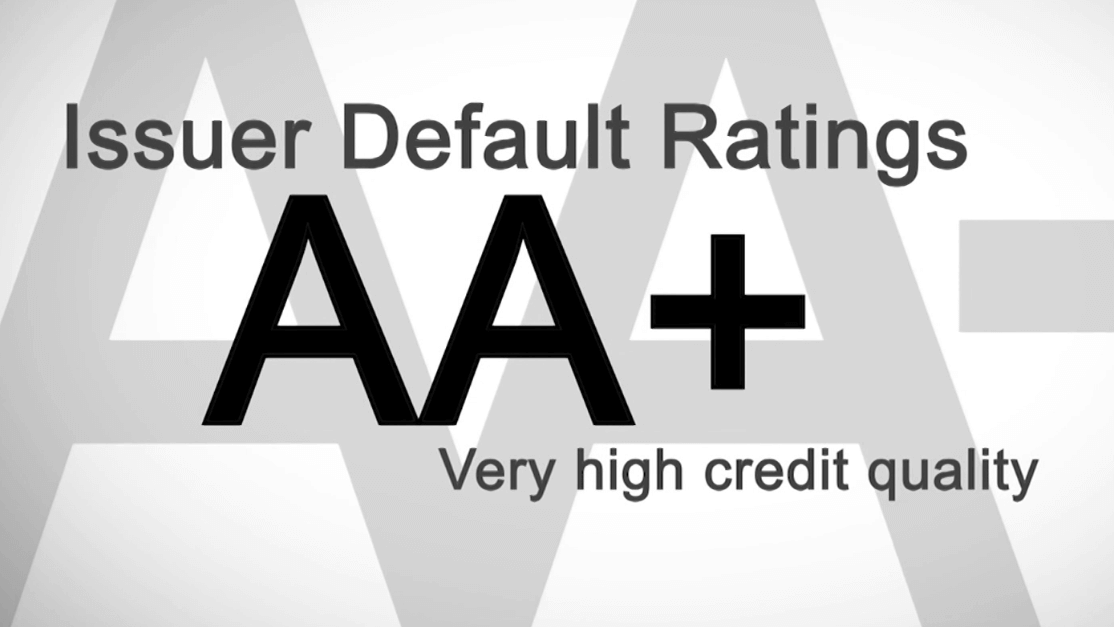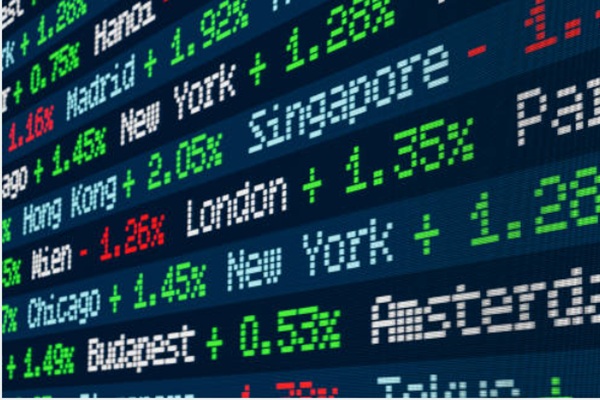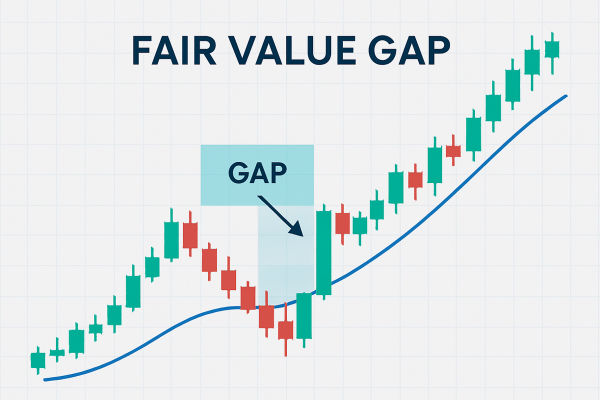Credit rating agencies play a very important role in the international financial markets by reducing financial risk through regular, objective, and unbiased assessments of the assets of companies and individuals. International credit rating agencies are state-regulated, independently operated intermediary services that typically provide independent valuations of all assets globally and interpret this data according to their position and interests.

Credit Rating
A credit rating agency, in simple terms, is an independent and neutral professional rating agency that accepts a commission from the subject of the rating and then applies scientific methods to investigate, review, compare, measure, and comprehensively evaluate the subject of the rating according to a set of criteria and regulations. Finally, these rating agencies will use simple and intuitive symbols (e.g., AAA, AA, BBB, CC, etc.) to represent the evaluation results, which are announced to the public as a kind of evaluation behavior.
Credit rating agencies mainly assist creditors in determining the default risk of corporate or government debt. For example, if a company needs to issue debt to raise funds, many companies will purchase rating services from rating agencies for creditors' reference. The higher the rating, the more capable the creditor is of repaying the debt. When the rating drops, it signals an increase in the risk to creditors. The company has to raise the interest rate accordingly to offer a higher return to attract others to buy the bonds. It also means that the cost of debt issuance or financing increases.
An international credit rating agency is an international rating organization that does not represent the interests of any country. It is the kind of supranational, sovereign international rating agency that can achieve the impartiality and authority needed to stabilize international credit relations. Currently recognized by the international and authoritative rating agencies are three: S&P, Fitch, and Moody's.
The Three International Credit Rating Agencies
Standard & Poor's Global Ratings: Its history can be traced back to 1860. when it was established as an independent financial information business. It began providing credit rating services in 1941 and has become one of the largest credit rating agencies in the world.
Moody's Investors Service (Moody's): Its history dates back to 1909. when John Moody founded the company, which initially used to publish risk reports on railroad companies. It later began providing credit ratings on railroad bonds and became a leading credit rating agency.
Fitch Ratings: Fitch Ratings was founded in 1913 as an investment bank. Fitch began providing credit rating services in 1924 and became an independent credit rating agency.
These agencies initially focused on the credit ratings of railroads and industrial companies, but as the financial markets continued to expand and diversify, they began to offer a broader range of credit rating services, including government debt, financial instruments, and various types of corporate bonds.
During the 20th and 21st centuries, these agencies have grown in global influence, and their ratings have played an important role in the stability of investors, debt issuers, and financial markets. However, they have often been criticized for "taking money from people to do things for them", a reference to the direct conflict of interest in the agencies' practice of charging debt issuers large fees before rating bonds.
Some critics also argue that rating agencies are not capable of making accurate predictions. For example, during the financial tsunami in 2008. the rating agencies rated many structured products known as [toxic assets] AAA. It was only when the entire real estate market collapsed and Lehman filed for bankruptcy that the rating agencies rushed these products into a significant downgrade. On the other hand, in the European debt crisis, the rating agencies were criticized for reacting too quickly by downgrading the ratings of the "European countries", which aggravated the bond sell-off and worsened the crisis.
Among the three major rating agencies, S&P and Moody's are based in the United States, while Fitch has its headquarters in New York and London. This makes people suspect that the three major rating decisions are political behavior against non-European and American countries. A coalition of non-European and American countries, such as the brics, once proposed to form their own rating agency to counter the Big Three. China, Russia, and India have all set up their own rating agencies. But so far, they have not been universally recognized internationally.
Because of this, however, regulators and market participants have been working hard to improve the standards and transparency of credit ratings.
International credit rating agencies' bond credit ratings
| Standard & Poor's(S&P) |
Moody's(MCO) |
Fitch |
| AAA |
AAA |
AAA |
| AA+ |
AA1 |
AA+ |
| AA |
AA2 |
AA |
| AA- |
AA3 |
AA- |
| A+ |
A1 |
A+ |
| A |
A2 |
A |
| A- |
A3 |
A- |
| BBB+ |
Baa1 |
BBB+ |
Three International Credit Rating Standards
Credit ratings are categorized according to different ratings. Some ratings are given to subjects, and some are given to specific debts. Also, there is a difference between long-term and short-term ratings.
For subject ratings, S&P's and Fitch's long-term and short-term ratings look primarily at the probability of the subject defaulting, meaning that they are less concerned with the losses that might result from a default. Moody's long-term subject ratings, however, look at both the probability of default and the extent of losses from default. Moody's short-term principal ratings, however, focus only on the probability of default.
Turning to debt ratings, all three major rating agencies are concerned with default rates and loss-on-default rates for long-term bonds. However, S&P's short-term debt ratings include both the default rate and the loss-on-default rate, whereas Moody's and Fitch focus only on the bond default rate and not so much on the loss rate.
S&P's long-term credit ratings are ten grades, ranging from AAA to D, with BBB and above being investment grade and BBB and below being speculative grade. Fitch and S&P's long-term credit ratings are similar, except that the D grade is subdivided into DDD, DD, and D.
Moody's also has nine grades for long-term credit ratings, ranging from AAA to C. Above Baa is investment grade, and below Baa is speculative grade. To make the differences within each grade more clear, Moody's also prefaces each grade with the numbers 1. 2. and 3 to differentiate them.
Although short-term credit ratings and long-term credit ratings have different symbols, there is a correlation between their credit risks. If a company's long-term credit rating is low, its short-term solvency will also be affected.
Top 10 international credit rating agencies
| RANKING |
RATING AGENCY |
HEADQUARTERS LOCATION |
| 1 |
S&P (S&P Global Ratings) |
United States of America |
| 2 |
Moody's (Moody's Investor Service) |
United States of America |
| 3 |
Fitch (Fitch Ratings) |
United States of America |
| 4 |
Morningstar (DBRS) |
Canada |
| 5 |
Egan Jones Ratings |
U.S.A. |
| 6 |
AM Best (Bayesian Rating) |
United States of America |
| 7 |
China Chengxin International |
China |
| 8 |
Japan Credit Rating Agency (JCR) |
United States |
| 9 |
Credit Analysis and Research Corporation (CARE) |
India |
| 10 |
Korea Investor Service Center (KIS) |
Korea |
Disclaimer:This material is for general information purposes only and is not intended as(and should not be considered to be)financial,investment or other advice on which reliance should be placed.No opinion given in the material constitutes a recommendation by EBC or the author that any particular investment,security,transaction or investment strategy is suitable for any specific person.







